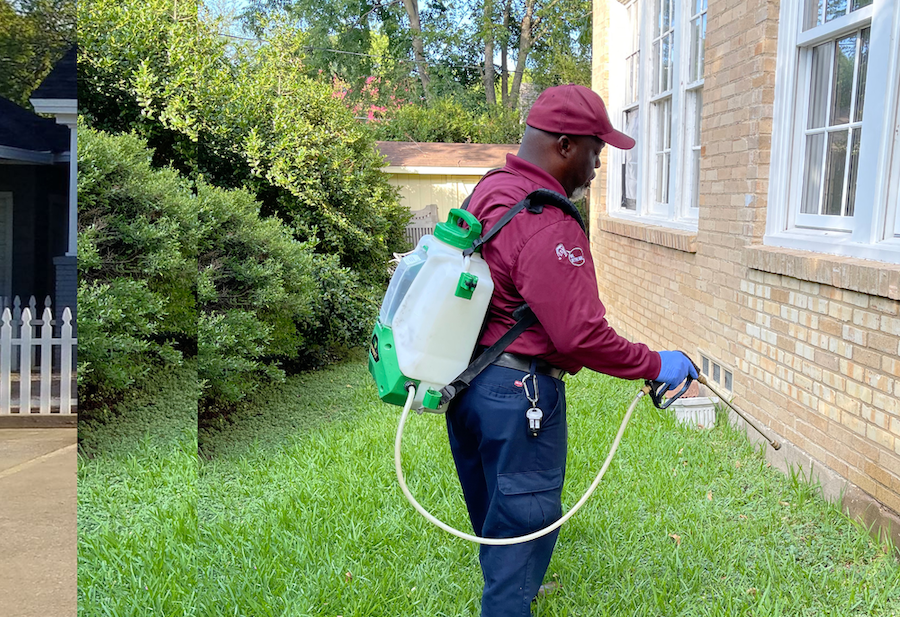Expert A1 Charlotte Bed Bug Exterminator - High Quality Service Ensured
Wiki Article
Bed Bug Therapy Failure: Comparing Chemical Vs. Non-Chemical Solutions
In the realm of insect control, especially when taking care of the relentless issue of bed insects, the selection between chemical and non-chemical therapy solutions can be an essential one. Both strategies provide distinct advantages and disadvantages, affecting variables such as efficiency, safety considerations, and general expense. By checking out the nuanced information of each approach, a clearer understanding of which path to pursue in attending to a bed bug invasion can be obtained.Efficiency of Chemical Therapies
Chemical therapies for bed insect infestations have actually been widely recognized for their potent and rapid effectiveness in eliminating these pests. When taking into consideration the efficiency of chemical therapies, it is crucial to comprehend that they can offer a thorough and fast service to a bed pest problem.Additionally, chemical treatments have the benefit of providing recurring results, suggesting that they can continue to remove bed bugs also after the first application. This residual activity is especially beneficial in combating any type of prospective re-infestations. In addition, the rapid activity of chemical treatments can bring relief to people facing serious bed pest infestations, permitting them to restore control of their living rooms rapidly.
Safety Worry About Chemical Solutions
One critical aspect that requires cautious factor to consider when making use of chemical remedies for bed pest treatment is making sure the security of passengers and the setting. While chemical therapies can be effective in eradicating bed bugs, they may pose risks otherwise handled properly. Among the primary safety and security worry about chemical options is the potential harm they can cause to human wellness. Direct exposure to particular chemicals utilized in bed pest treatments can bring about respiratory issues, skin irritation, or various other unfavorable reactions, specifically in individuals with pre-existing problems or sensitivities. Additionally, inappropriate application or dose of chemical pesticides can cause hazardous deposits lingering in the treated area, presenting long-lasting health and wellness threats to passengers.Additionally, the environmental impact of chemical services is an additional considerable consideration. Some chemicals made use of in bed insect treatments may be dangerous to advantageous insects, wildlife, and ecosystems if they seep into the dirt or water supply. It is important to use chemical therapies judiciously, complying with safety guidelines, and taking into consideration much less harmful options to mitigate these threats and ensure the reliable and safe administration of bed pest problems.
Advantages of Non-Chemical Approaches
Considering the possible security issues and ecological influence linked with chemical services for bed bug treatment, checking out non-chemical methods offers an encouraging choice with a number of distinct benefits. Non-chemical treatments are ecologically friendly, as they do not add to air or water contamination, making them a sustainable option for parasite control.Furthermore, non-chemical solutions can be efficient in targeting bed pests, consisting of hard-to-reach locations where chemical therapies may not permeate - A1 bed bug exterminator charlotte. Approaches such as warm treatment, vacuuming, heavy steam cleansing, and mattress coverings provide complete removal without the usage of dangerous chemicals.
Limitations of Non-Chemical Treatments

Furthermore, non-chemical therapies often need multiple applications to achieve successful obliteration. This can be taxing and may not constantly guarantee full elimination of all bed bugs and their eggs, particularly in hard-to-reach or hidden places.
Furthermore, the success of non-chemical treatments heavily counts on correct application and thoroughness, which can be testing for people without specialist experience. Inadequate application of non-chemical techniques may lead to incomplete removal, resulting in persistent infestations and the requirement for extra treatments.
Therefore, rat pest control while non-chemical treatments have their advantages, it is necessary to acknowledge these constraints and consider them when establishing one of the most efficient method for taking care of bed pest infestations.
Price Contrast: Chemical Vs. Non-Chemical Options
Provided the constraints associated with non-chemical therapies, a vital aspect to review in the context of bed pest administration is the cost comparison in between chemical and non-chemical alternatives. In contrast, non-chemical therapies like heat treatment or heavy steam can be extra pricey, with expenses varying from $1,000 to $6,000 for a whole home. While the preliminary price of chemical treatments may seem reduced, numerous therapies might be required to fully remove the problem, possibly raising the overall expense.Verdict

Thinking about the prospective safety and security concerns and ecological impact linked with chemical options for bed pest treatment, exploring non-chemical techniques presents an appealing alternative with a number of unique benefits.Offered the constraints associated with non-chemical therapies, a necessary aspect to assess in the context of bed bug administration is the expense comparison between chemical and non-chemical alternatives. In comparison, non-chemical treatments like warmth treatment or heavy steam can be much more pricey, with costs varying from $1,000 to $6,000 for an entire home. While the initial price of chemical therapies may appear lower, several treatments may be needed to fully eradicate the invasion, possibly enhancing the overall cost.In conclusion, when contrasting chemical and non-chemical bed bug treatment alternatives, it is vital to think about performance, safety and security, advantages, limitations, and cost.
Report this wiki page